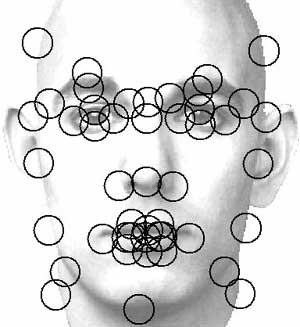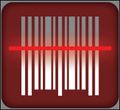 CrunchGear reports on a new product called Lockface USB flash drive from Futen, a Japanese company. The flash drive uses facial recognition to identify its users. According to CrunchGear: “The first thing to do is to register a number of pictures of your face. After that, the Lockface verifies your face every time you need to access data on it (the verification process takes about a second). The USB drive doesn’t require extra software to be downloaded or installed. Alternatively, you can also use a password, completely ignoring the face recognition function of the device. It uses 256-bit AES to encrypt the data. Futen says the device has an error rate of about 2% (it verifies the “wrong†person in 1.91% of cases and won’t verify the right person in 1.98% of cases).â€
CrunchGear reports on a new product called Lockface USB flash drive from Futen, a Japanese company. The flash drive uses facial recognition to identify its users. According to CrunchGear: “The first thing to do is to register a number of pictures of your face. After that, the Lockface verifies your face every time you need to access data on it (the verification process takes about a second). The USB drive doesn’t require extra software to be downloaded or installed. Alternatively, you can also use a password, completely ignoring the face recognition function of the device. It uses 256-bit AES to encrypt the data. Futen says the device has an error rate of about 2% (it verifies the “wrong†person in 1.91% of cases and won’t verify the right person in 1.98% of cases).â€
(more…)
Blog
-
Biometric identification and facial recognition
-
Solution to illegible handwriting puzzle
Thanks for all the people who ventured a guess. Only the medications are transcribed and the original image is posted below the answers as a reference.
(more…) -
Cool Technology for Pharmacy
Installing and using Citrix Receiver on your iPhone/iPod Touch
While at ASHP Midyear a colleague and friend of mine, @pillguy, was able to pull up the pharmacy system at his hospital using Citrix on his iPhone. At that moment I was attacked by a green monster and nearly consumed with envy. I can not yet match this feat of superiority with my Droid, but I’m hopeful.
(more…) -
Clinical Surveillance
There is a nice article in the November 2009 issue of Hospital Pharmacy on the use of clinical surveillance in pharmacy. I’ve mentioned these types of systems before here and here.
From the article:
Clinical surveillance tools are atype of clinical decision support system (CDSS), providing pharmacists with patient information that has been filtered according to predefined criteria and is presented at appropriate times to enhance patient care. These tools pull data from 3 sources—admission/discharge/transfer (ADT), laboratory, and pharmacy—and use clinical rules to analyze the data and alert the user of instances that meet the rules’criteria. Though there is some variability in methods across the different vendors’ products, these Webbased applications enerally function by interfacing (HL7) with the hospital’s information systems to securely pull the data to the vendor’s server where the data are analyzed against a set of clinical rules. Some vendors allow the client to build their own rules, some provide a foundational set of rules, and others do not allow user-defined rules. This is an important distinction to make when evaluating the different applications.
For more information try visiting John’s Evernote repository for Clinical Decision Support.
-
For the puzzle lovers in the group
Below is an example of some pretty bad handwriting. Take a look at it and see if you can decipher what the physician wants. I am looking for only medication related orders. Leave your guesses in the comment section. Good luck.
The solution can be found here.
-
Requirements for a pharmacy informatics professional
In a post from ASHP Midyear I mention that “pharmacists are highly educated clinicians that deserve to practice informatics at that same level. [They] should be the individual involved in making sure that systems are designed to include pharmacy workflow, that the reports being written provide the necessary information to be clinically relevant, that current clinical standards are adhered to during implementation of new systems, be the representative at the table during discussions of integration and interoperability of hospital systems, etcâ€
A couple of things caught my eye since writing those words and I would like to share them with you here.
(more…) -
Cool Technology for Pharmacy
My Cool Technology for Pharmacy this week strays a little from my normal hardware and software approach and focuses on the concept of RxNorm. The reason for this deviation is simple; my ignorance of RxNorm was never more evident than during my time at ASHP Midyear this week. I don’t like it when I lack understanding of what people are talking about, and this happened on a couple of occasions during discussions involving RxNorm. This was especially true during a presentation by Dr. Usha Desiraju of First DataBank. Dr. Desiraju’s presentation focused on the use of RxNorm and interoperability.
So I was forced to do a little reading. The entire idea seems simple enough, but like many good ideas implementation and acceptance is a little like trying to push the wrong end of two magnets together. In the simplest terms I can muster, think of RxNorm as a standardized language used to identify each unique medication across multiple systems.
(more…)

